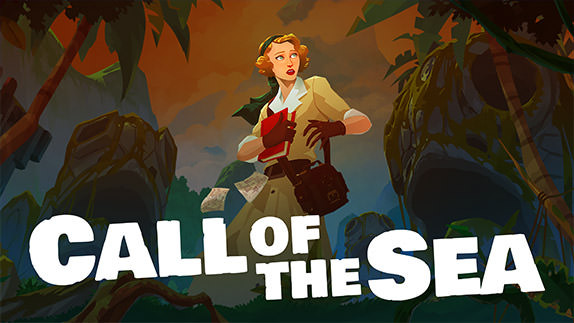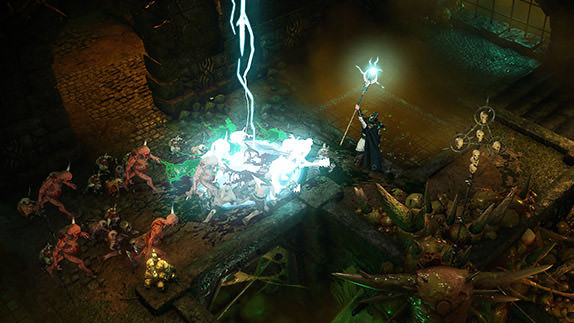The Witch and the Hundred Knight Review

 By Kevin Mitchell | April 22, 2014
By Kevin Mitchell | April 22, 2014
Once again, I found myself unsure what to think of NIS America's and Nippon Ichi Software's latest, The Witch and the Hundred Knight, after playing through their previous quirky game on the PlayStation Vita. The Witch and the Hundred Knight has fully 3D character models, rather than the 2D sprites that NIS games are known for. The colorful world and energetic characters are in stark contrast with the very twisted and perverse humor used throughout.
The game begins with the scantily clad swamp witch Metallia summoning the legendary Hundred Knight to her world. Unable to leave her swamp, Metallia has conjured up a plan to use the Hundred Knight, which is where we come in, to venture across the land destroying the hidden Pillars of Temperance, expanding the size of Metallia's swamp realm.
The tutorial, a staple in these types of games, goes on for what seems like forever, but that's not necessarily a bad thing as the game has a deep learning curve. Key mechanics such as moving, dodging, and attacking are covered, but more advanced gameplay elements are glossed over rather quickly. The beginning chapters are a breeze, as you won't have to stray far from button mashing the attack button to succeed.
The Hundred Knight wouldn't be a legendary warrior without weapons, and you are able to equip up to five at once, leveling them up to become an unstoppable powerhouse. The plan went well until I reached a new chapter and became instant food for some nasty spider creatures. No matter how many times I would connect with all five weapons, the damage just wasn't enough. Paying attention to the hints given on the following loading screen, it finally clicked in my head that enemies have their own strengths and weaknesses, and simply button mashing my way through the game isn't going to work any longer. Swapping out my slow but powerful hammers for staves with magical powers (in this case poison), I slaughtered the creatures of the forest with ease. The position in which each weapon is used also matters as every piece of equipment will have a number associated with it, with the key to have them in chronological order for a bonus. Magical skills earned throughout the game are called Tochkas and feature a wide range of different variations. Switching Facets changes your appearance slightly, providing new stats to level up and unique abilities.
Since every action and every step you take drains GCals, it is paramount you make the most of your available time and not haphazardly run about. The game is much more forgiving than other roguelike games as the Pillars scattered allow you to return to the swamp, ending your current run. The risk/reward system, however, taunts you to stay within the stages till the end for more experience, stat boosts, and loot. It goes without saying that you'll lose everything if GCals are fully depleted.
Exploring the environment, attacking, and defending against enemies require the use of GCals, similar to food requirements in roguelike games. Once you run out, you won't be able to rely on Metallia's magic powers, and you'll be exited from the current dungeon. Getting killed and reviving at the nearest Pillar of Temperance takes away a large chunk of the available GCals. The meter can be refilled, which I didn't realize until a few hours into the game, by consuming nearly defeated enemies or using healing items. Eating is the best way to refill GCals, but at the cost of filling the Hundred Knight's limited space stomach with garbage. Once full, you'll no longer be able to consume anything, and you are unable to empty your stomach until the end of the current dungeon. Hidden items can expand the amount of storage space in the stomach.
The humor in The Witch and the Hundred Knight won't be for everyone; in fact, it may turn you off completely early on in the game. After learning how to use a powerful finishing attack on one of the earlier bosses, Metallia's despicable personality takes over in full force. Not being able to have a single conversation without her calling someone a "vomiting whore" is a little unsettling. Taking it to another level, kicking someone when they are already down, Metallia transforms the witch into a mouse, sending horny male mice running after her with the implication of sexual assault. In the context of the narrative, it makes the entire scene truly deplorable.
Simply Put
The Witch and the Hundred Knight provides more enjoyment when you put more into the game. The deep learning curve requires dedication and patience while you learn the more advanced game mechanics. I enjoyed the dark humor for most of the game, but the scene mentioned earlier made even me cringe. Yes, the game could have done a much better job at explaining some of the finer gameplay elements, but overall I enjoyed playing through the game.
Note: The Witch and the Hundred Knight was reviewed on PlayStation 3. A digital copy of the game was provided by the publisher/developer.




